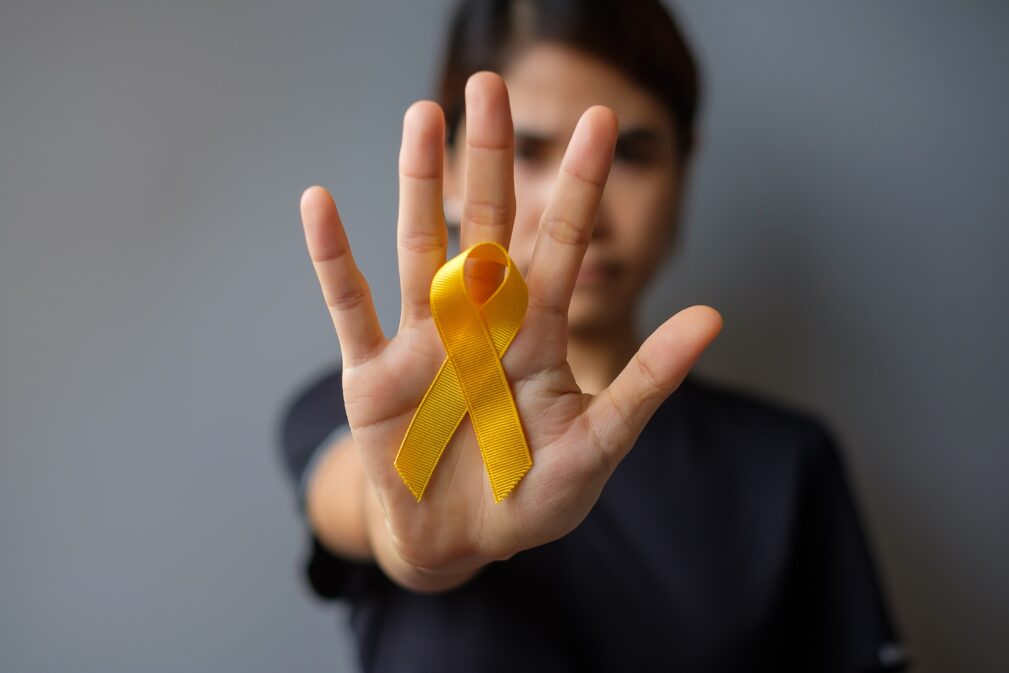
Suicide Prevention: Understanding the Top 5 Myths on Suicide
While suicide prevention and awareness have grown over the past few years, it continues to be a serious public health problem. Understanding suicide and distinguishing fact from fiction is the first and arguably most important step to prevention. In this blog, we will share the top 5 myths on suicide and explain what makes them untrue.
What is the Definition of Suicide?
According to the CDC, suicide, defined as the act of killing oneself, is the 12th leading cause of death in the U.S. overall.
Most often, individuals who attempt or commit suicide are struggling with a mental health disorder, such as experiencing a major depressive episode, but can also occur as a result of addiction, substance use, or other co-occurring disorders.
There are instances when no type of disorder plays a part, for example, someone dealing with loss and grief, or declining physical health.
While suicide affects people of all ages, gender, and race, there are a few groups that have higher suicide rates than others.
- Suicide is the 2nd leading cause of death for individuals between the ages of 10-14 and 25-34.
- Suicide is the 3rd leading cause of death for individuals between the ages of 15-24.
- Suicide is the 4th leading cause of death for individuals between the ages of 35-44.
In addition to the statistics above, it has also become apparent to researchers that more women attempt suicide, but more men die by suicide.
When it comes to learning about suicide, it’s important to understand that there is a difference between suicide itself, attempted suicide, and suicidal ideation.
As we mentioned above, suicide is the act of taking one’s life, and attempted suicide is the act of bringing harm to oneself with the intention to die.

Warning Signs of Suicide
Many warning signs point to someone at risk of committing suicide. However, it’s important to remember that every individual is unique; therefore, these signs may present themselves differently.
Individuals talking about:
- Wanting to die
- Having guilt or shame
- Being a burden to others
Individuals feeling:
- Empty, hopeless, trapped, and having no reason to live
- Extremely sad, anxious, agitated, and full of rage
- Unbearable emotional or physical pain
Individuals changing behaviors include:
- Making plans and researching ways to die
- Withdrawing from friends and family
- Saying goodbye, giving away important items, and making a will
- Eating or sleeping more or less
- Using drugs and alcohol more often
Suicidal Ideation and Impulsive Behavior
Suicidal ideation (SI), is a broad term used to describe a range of contemplations, wishes, and preoccupations with death and suicide.
Often, there is a distinct correlation between suicidal ideation and impulsive behavior. Impulsivity occurs when an individual lacks higher-order control, including decision-making.
This becomes a large risk for someone experiencing suicidal ideation. Without the ability to make decisions and resolve problems, stressors build up, leading to more pain and eventually giving rise to self-harm or suicidal behaviors.
There isn’t a clear or consistent definition of suicidal ideation within the medical community, however, mental health professionals have agreed that there can be 2 types of suicidal ideation: active and passive.
Active suicidal ideation indicates experiencing current and specific suicidal thoughts. In other words, this is when an individual has the conscious desire to inflict self-harming behaviors that could result in death as a consequence.
Passive suicidal ideation refers to a general desire to die, but the individual doesn’t have a plan of inflicting lethal self-harm to kill oneself. This also includes an indifference to the possibility of losing their life in an accident because they didn’t take steps to try and survive.

Top 5 Myths on Suicide
There are many reasons suicide continues to grow as a serious public health problem, but one of the main reasons is the stigma surrounding it.
All individuals must stay educated about suicide prevention. The first step is ensuring they can distinguish fact from fiction. In the section below we will break down the top 5 myths on suicide and provide the truth behind each one.
1. “Suicide is rare. We don’t have to worry about it.”
Unfortunately, suicide is much more prevalent than many people think. As we mentioned before, suicide is one of the most common causes of death in the U.S. and globally.
According to the CDC, 48,183 people committed suicide in 2021 and 1.7 million adults attempted. This shows that suicide is a serious, and common problem.
It’s also important to remember, that the true numbers are likely even higher. Professionals believe that many attempts are not reported and many deaths are not accurately recorded as suicide.
2. “Talking to people about suicide is dangerous. It will put the idea in their head.”
Many people are afraid of bringing up or having an open conversation about suicide. One of the reasons for this is the fear of putting suicidal thoughts or ideas in someone’s head.
However, mental health professionals have stated that the best way to help with suicide is to address it upfront. Talking about it can help to relieve shame and work towards helping with the problems that are causing a person so much distress.
It’s also important to note that research has shown that there is no increase in urges, intent, or attempts after being asked about suicide (Cha et al., 2016).
3. “People that talk about suicide don’t actually do it.”
One of the biggest myths on suicide is that individuals wouldn’t talk about suicide if they wanted to take their own life. This could not be more wrong.
We know that communication about suicide often precedes attempts (Pompili et al., 2016). Talking about suicide may communicate intent and danger. Furthermore, discussing it may indicate a person has mixed feelings about suicide and is asking for help.
In addition, individuals who engage in parasuicidal behavior, such as self-harm, are also at serious risk. Unintentional death is a serious risk. A “cry for help” means that someone needs help.
4. “People who attempt a lot aren’t a real risk.”
Previous attempts are a major risk factor. A meta-analysis found that people who have previously attempted suicide are 38 times likelier to complete suicide (Harris & Barraclough, 1997).
The risk is highest in the first 2 years after an attempt and is also higher if the person has tried more than one method. It’s important to be careful not to become burnt out or numb to the risk of suicide. Any attempt can be fatal and half of completed suicides are an initial attempt (Isometsa & Lonnqvist, 2018).
5. “There’s no way to help suicidal people.”
The last, and most tragic myths on suicide is that those who are suicidal are past the point of getting help. This is not only false, but it’s also a dangerous thought because someone who is suicidal needs support and care as soon as possible.
There are multiple evidence-based treatments for suicidal ideation and suicidality. We integrate many of them at Malvern Behavioral Health.
Dialectical behavior therapy has been shown to be effective at reducing suicidal thoughts, parasuicidal behaviors, and frequency and length of hospitalizations (Linehan et al., 1991, Koons et al., 2001).
Cognitive behavioral therapy for suicidal ideation has also proved to be beneficial. This therapy is targeted specifically at suicide and has been shown to reduce suicidal thoughts and behaviors (Mewton & Andrews, 2016).
Finally, motivational interviewing has also been shown to increase treatment engagement and can help when combined with other therapies (Hettema et al., 2005). Our EMR also has the Stanley-Brown Safety Plan and the Columbia Suicide Severity Rating Scale built into it.
As we mentioned above, suicide prevention starts with education. For more information about suicide check out the following resources:
- American Foundation for Suicide Prevention
- NIH video about the Intersection of Suicide and Substance Use
- American Association of Suicidology
- 988 Hotline





